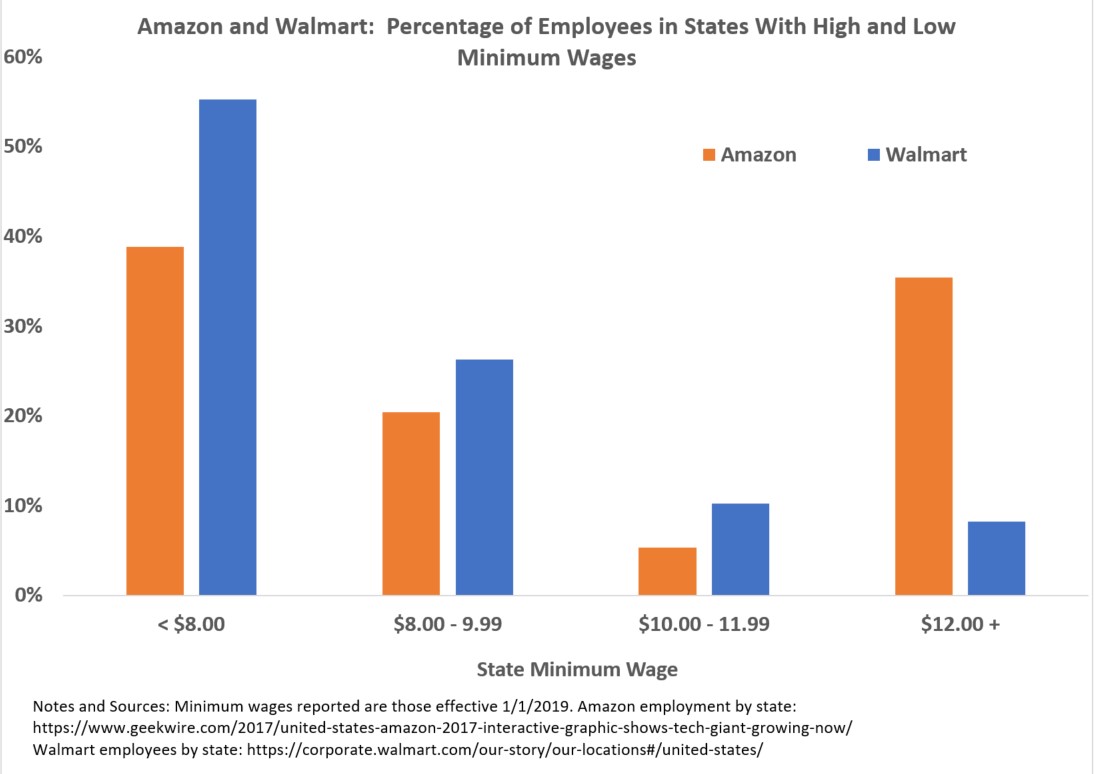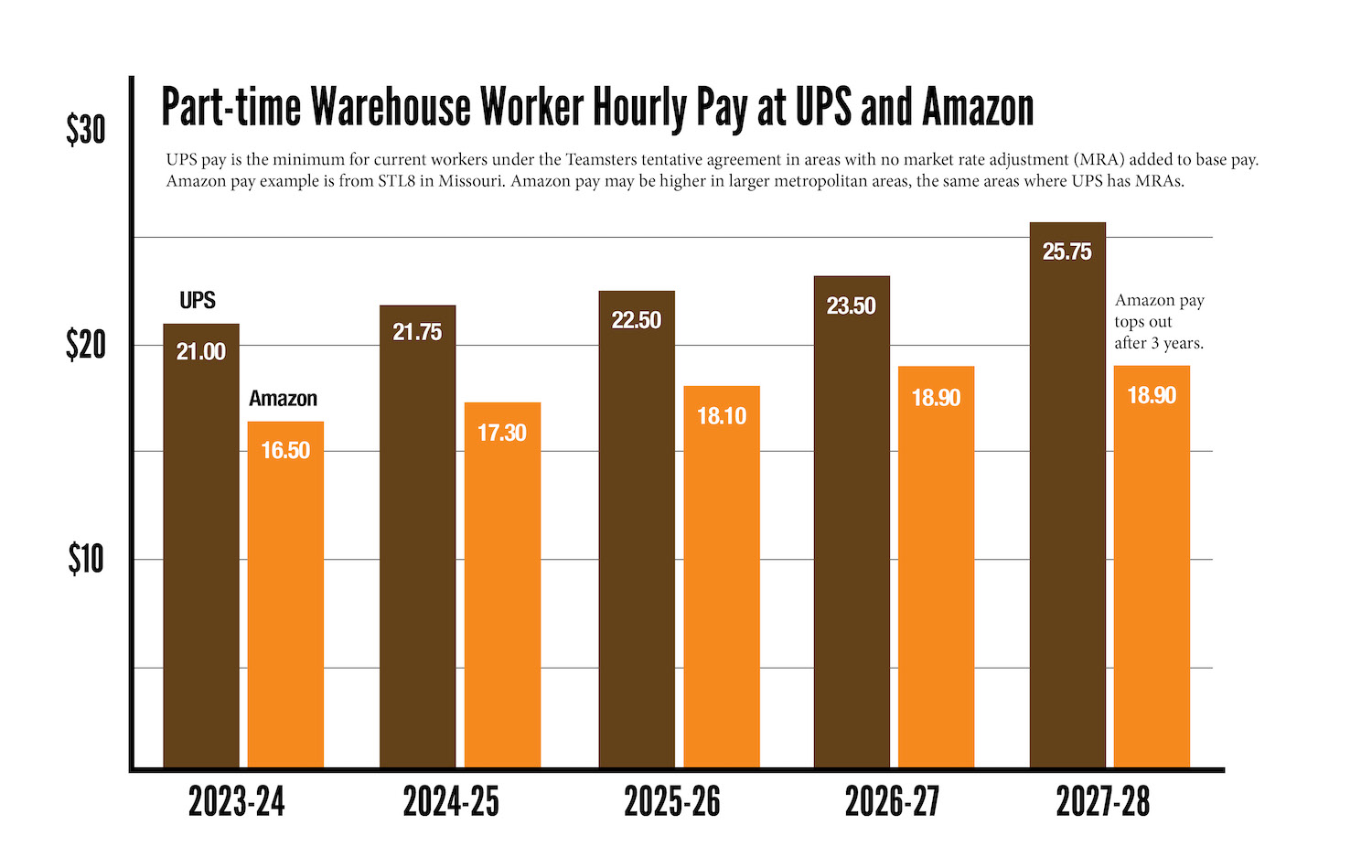In the ever-evolving landscape of e-commerce, Amazon has emerged as a powerhouse, captivating millions with its vast selection and lightning-fast deliveries. As consumers continue to flock to this digital retail giant, questions arise regarding the treatment and compensation of its army of employees. One burning question that often springs to mind is just how much Amazon pays per hour. This article aims to peel back the layers and shed light on the wages earned by those who help make our online shopping dreams come true. From warehouse workers to customer service representatives, we delve into the complex terrain of Amazon’s hourly pay structure and explore what it means for both employees and consumers alike.
The current state of Amazon’s hourly wages

It’s no secret that Amazon has been under scrutiny for their hourly wages. While the company touts a base pay of $15 per hour, recent reports indicate that this may not be the full story. Many employees claim that they have to work longer hours than what is officially reported, effectively diluting their hourly earnings. This raises questions about fairness and transparency within one of the world’s largest corporations.
Furthermore, it’s important to consider the cost of living in various areas where Amazon operates. $15 per hour may seem like a decent wage in some parts of the country, but in high-cost cities like New York or San Francisco, it barely covers basic expenses. This discrepancy highlights the need for location-based adjustments in Amazon’s compensation strategy to ensure that all employees can meet their daily needs without having to rely on government assistance programs.
Minimum wage at Amazon: understanding the basics

Amazon, a multinational conglomerate that dominates the online retail market, has long come under scrutiny for its treatment of workers. One aspect that often grabs headlines is its minimum wage policy. In 2018, Amazon increased its minimum wage to $15 per hour for all employees in the United States. While this move was widely hailed as an important step towards better working conditions, it is essential to understand the basics of how this affects Amazon’s workforce.
One key aspect to note is that while $15 per hour may seem like a fair wage on the surface, it can be insufficient for many workers living in high-cost areas such as Seattle or New York City. Cost of living varies greatly across the country, and what may be considered a decent wage in one area could leave individuals struggling to make ends meet in another. This raises questions about whether Amazon’s minimum wage policy truly tackles the issue of income inequality or merely meets legal requirements. Furthermore, it is worth examining whether a higher minimum wage leads to better job satisfaction and retention rates among Amazon employees. While increasing wages can potentially improve morale and reduce turnover rates, some argue that simply raising salaries without addressing other aspects such as workplace culture or career advancement opportunities may not yield long-term benefits for workers. Companies should consider implementing comprehensive strategies that encompass various aspects related to employee well-being rather than solely focusing on boosting wages.
Factors that affect hourly pay at Amazon
There are several factors that play a significant role in determining the hourly pay at Amazon. One crucial factor is the location of the fulfillment center. Hourly wages vary across different states and even within cities due to differences in cost of living and local labor market conditions. For example, employees working at an Amazon warehouse in San Francisco can expect higher hourly pay compared to those working in a smaller city like Birmingham, Alabama.
Another important factor is employment experience and skill level. Amazon has various positions that require different levels of expertise, from entry-level warehouse workers to highly specialized roles such as software engineers or data scientists. Naturally, these positions command varying compensation packages based on the level of knowledge and skills required. Moreover, employee tenure also influences hourly pay rates at Amazon. The company values loyalty and rewards long-time employees with incremental pay raises over time. This means that individuals who have been with Amazon for several years can enjoy higher hourly wages than new hires. Understanding these factors gives us a clearer picture of how Amazon determines hourly pay rates for its workforce across locations and positions. It emphasizes the importance of considering multiple variables when analyzing wage patterns rather than making sweeping generalizations about compensation at the company as a whole.
Comparing Amazon’s pay to other retailers
When it comes to comparing Amazon’s pay to other retailers, there are some interesting points to consider. One of the key factors is that Amazon’s minimum wage is higher than that of many other retailers. For example, in 2021, Amazon raised its starting wage to $15 per hour, while the federal minimum wage in the United States is still $7.25 per hour. This discrepancy definitely sets Amazon apart from other retailers who may not offer such competitive wages.
Another aspect to take into account is the potential for career growth and advancement within Amazon. While other retailers may pay similar hourly rates initially, Amazon has a reputation for providing numerous opportunities for upward mobility within the company. From entry-level positions all the way up to management roles, employees have a chance to earn higher salaries as they progress in their careers at Amazon. Additionally, it’s worth considering the overall package of benefits that Amazon provides compared to other retailers. In addition to offering competitive wages, Amazon also offers health insurance coverage options and retirement savings plans for its employees. These benefits can significantly impact an employee’s quality of life and financial security.
The controversy surrounding Amazon’s wages

The controversy surrounding Amazon’s wages has been a hot topic of debate for years. Critics argue that the retail giant pays its employees unfairly low wages despite earning billions in profit annually. On the other hand, Amazon defends its wage policies by pointing out that it provides competitive hourly rates within the retail industry.
However, one aspect often overlooked in this debate is the comprehensive benefits package offered by Amazon to its employees. These benefits include healthcare coverage, retirement plans, and even parental leave. While it may be true that some employees at Amazon are being paid less than what they deserve, it is important to consider the value of these additional benefits when evaluating their overall compensation.
Ultimately, whether or not Amazon’s wages are fair remains a highly subjective matter. It depends on various factors such as regional cost of living and individual job roles within the company. What is clear is that there is still much room for improvement when it comes to providing fair compensation and addressing income inequality within one of the world’s most powerful corporations.
Conclusion: evaluating the fairness of Amazon’s wages.
In conclusion, evaluating the fairness of Amazon’s wages is a complex issue that goes beyond just the hourly pay rate. While it is true that Amazon has faced criticism for its relatively low starting wages compared to other companies, it is important to consider the numerous factors that contribute to an employee’s overall compensation package.
One key aspect often overlooked is Amazon’s generous benefits package, including healthcare coverage and 401(k) plans. These additional perks can add significant value to an employee’s total compensation. Furthermore, Amazon offers opportunities for career growth and advancement within the company, enabling employees to increase their earning potential over time. However, critics argue that Amazon should do more to address income inequality and ensure a livable wage for all its employees. They argue that while some may benefit from the company’s immense growth and success, there are others who struggle on meager wages in challenging working conditions. This raises questions about how wealth is distributed within such a large corporation and whether efforts should be made towards greater income equality at all levels of employment.
Also Read: Why is website UX important for SEO?





Your point of view caught my eye and was very interesting. Thanks. I have a question for you.
child porn
Attractive section of content. I just stumbled upon your site and in accession capital to assert that I acquire actually enjoyed account your blog posts. Any way I will be subscribing to your feeds and even I achievement you access consistently quickly.
Your article helped me a lot, is there any more related content? Thanks!
It is appropriate time to make some plans for the future and it is time to be happy. I’ve read this post and if I could I wish to suggest you some interesting things or suggestions. Perhaps you could write next articles referring to this article. I desire to read more things about it!
Can you be more specific about the content of your article? After reading it, I still have some doubts. Hope you can help me.
Thank you for your sharing. I am worried that I lack creative ideas. It is your article that makes me full of hope. Thank you. But, I have a question, can you help me?
Can you be more specific about the content of your article? After reading it, I still have some doubts. Hope you can help me.
Your article helped me a lot, is there any more related content? Thanks!
Thank you for your sharing. I am worried that I lack creative ideas. It is your article that makes me full of hope. Thank you. But, I have a question, can you help me?
Your article helped me a lot, is there any more related content? Thanks!
Your article helped me a lot, is there any more related content? Thanks!